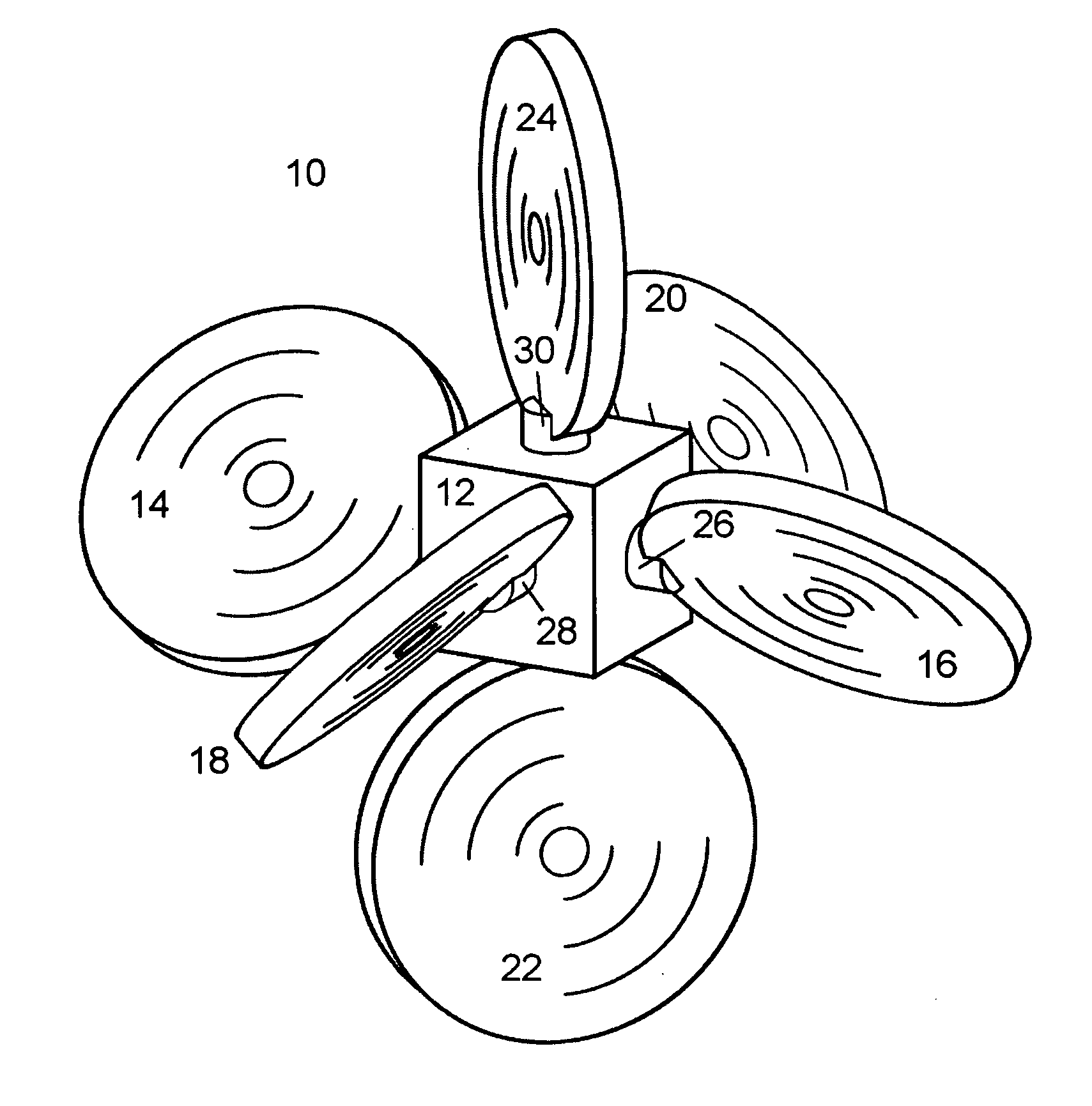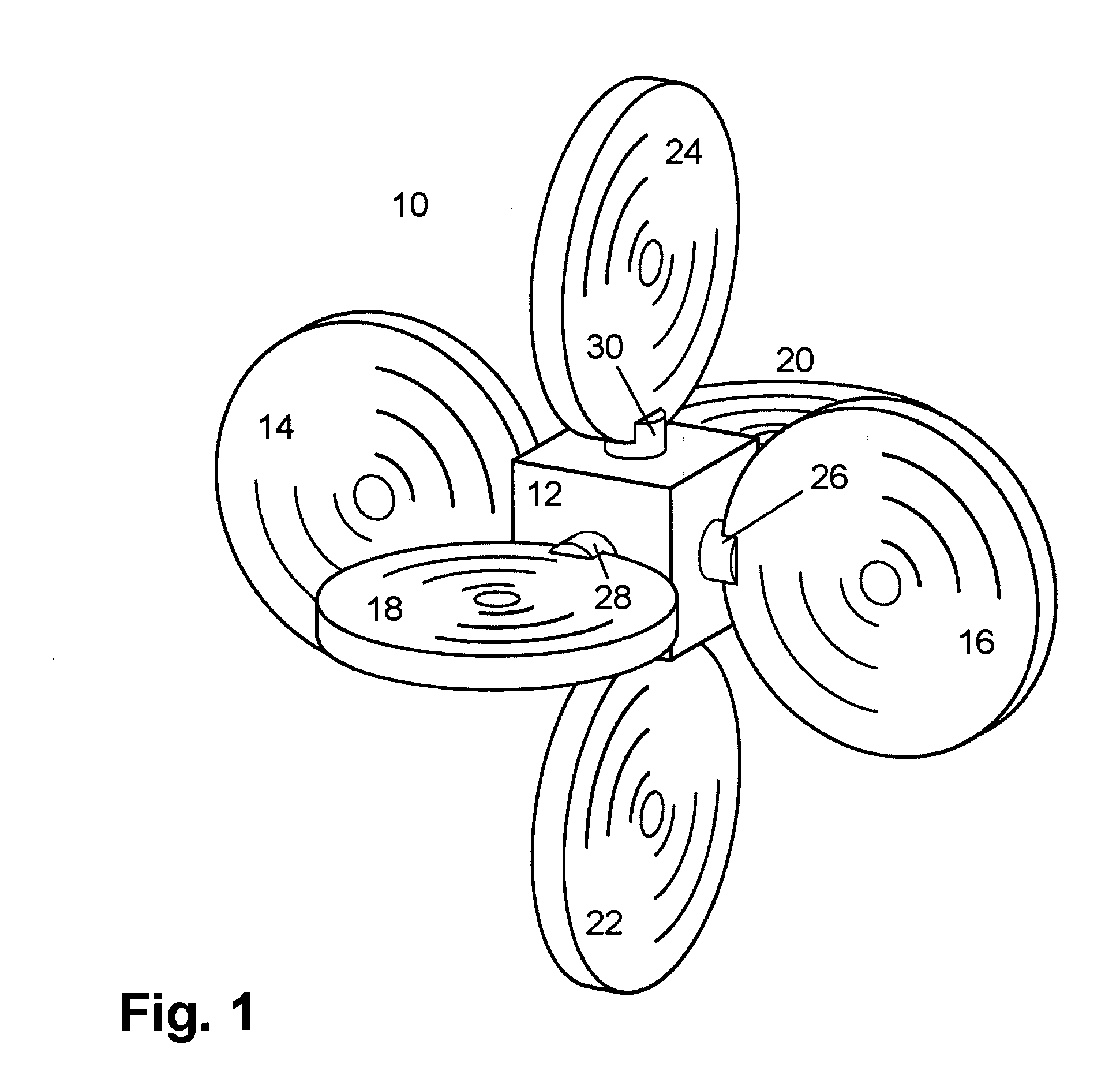Omnidirectional aircraft
a technology of omnidirectional aircraft and wing, which is applied in the field of aircraft, can solve the problems of inability to achieve full omnidirectionality of aircraft, inability to combine arbitrary rotation with device, and inability to achieve omnidirectionality in combination with arbitrary rotation, etc., and achieves the effect of simple translation from input to output commands
- Summary
- Abstract
- Description
- Claims
- Application Information
AI Technical Summary
Benefits of technology
Problems solved by technology
Method used
Image
Examples
Embodiment Construction
[0036]FIG. 1 shows in rear perspective view the preferred embodiment of the omnidirectional aircraft 10 comprising a cubic body 12 on which are mounted six propulsion units 14, 16, 18, 20, 22 and 24 through six mounts, of which three are visible: 26, 28 and 30. Each propulsion unit includes a peripheral hood, a motor centrally supported on struts attached to the hood, and a propeller attached to the motor.
[0037]FIG. 2 is the same view of the aircraft showing the six coordinate references. The three translational degrees of freedom are represented by the set of three orthogonal axes, transverse axis X, longitudinal axis Y, and vertical axis Z. The three rotational degrees of freedom are represented by pitch Q around axis X, roll R around axis Y, and yaw S around axis Z.
[0038] The six propulsion units are organized in three pairs lying along the three axes. The first pair, comprising coplanar units 14 and 16, is disposed along transverse axis X, and collectively provides positive or...
PUM
 Login to View More
Login to View More Abstract
Description
Claims
Application Information
 Login to View More
Login to View More - R&D
- Intellectual Property
- Life Sciences
- Materials
- Tech Scout
- Unparalleled Data Quality
- Higher Quality Content
- 60% Fewer Hallucinations
Browse by: Latest US Patents, China's latest patents, Technical Efficacy Thesaurus, Application Domain, Technology Topic, Popular Technical Reports.
© 2025 PatSnap. All rights reserved.Legal|Privacy policy|Modern Slavery Act Transparency Statement|Sitemap|About US| Contact US: help@patsnap.com



